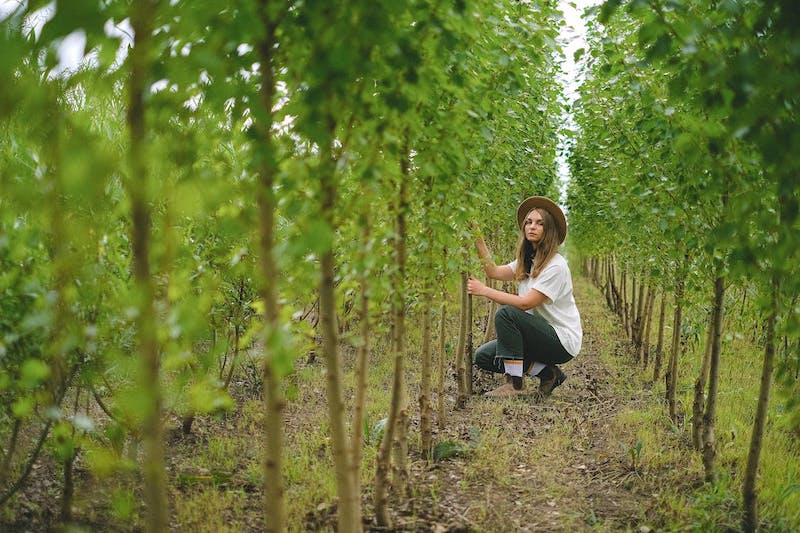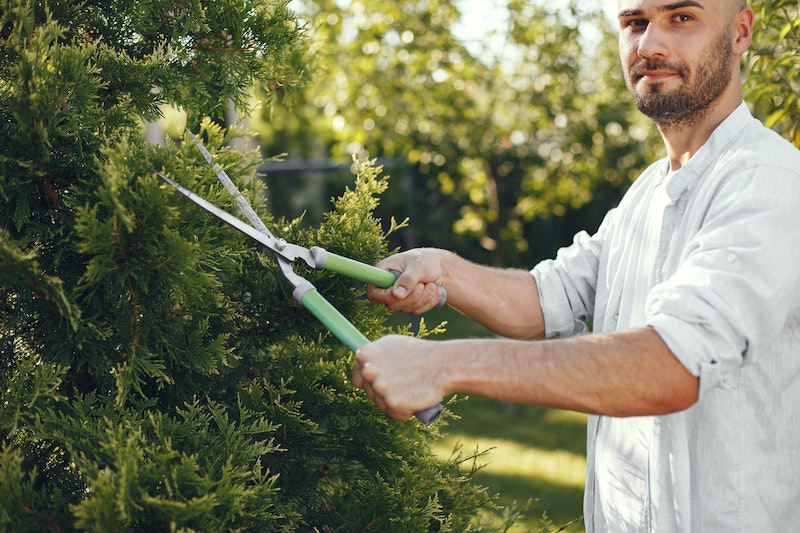Growing Trees
Trees in the home garden are used for many different purposes. They may provide shade for structures and gardens, bear fruit, or be strictly ornamental. Trees are also likely to be some of the most expensive plants a gardener buys, making the initial siting and planting techniques of utmost importance in the healthy survival of the plant.

Planting Trees
Trees will grow best when their specific light, water, and soil drainage needs are satisfied. Perform a soil test first to figure out what type of trees will grow easily in your garden. Trees are available to buy in three primary forms: bare root, balled and burlapped, and containerized or pot grown. The first two types are available only in the late winter or early spring and must be planted as quickly as possible to keep the exposed roots from drying out. Container-grown trees are generally available through the growing seasons and can be planted anytime up to the end of the summer. Always plant trees so that the root flare (or graft union on some trees) is just at or slightly above soil level. Trees need access to oxygen, and if planted too deeply, they will not establish properly and risk dying.
Watering Trees
Trees require a consistent watering routine from the time they are planted until they are fully established, which could be three or more years. Immediately after planting, give the tree water daily for the first 2-3 weeks, especially if you are planting during hot, dry conditions. Keep the soil consistently moist but not soggy. Watering should be reduced to every 2-3 days for the next three months. Make sure your tree gets one inch of water a week from supplemental irrigation or natural rain. After this initial 4-month period, watering can be reduced to once a week until the tree shows signs of growth in the trunk and branches. Once mature, the tree will only require supplemental watering during high heat or drought periods.

Fertilizing Trees
Apply a granular slow-release fertilizer once every 2-3 years for newly planted trees. Formulations with a lower ratio of nitrogen to phosphorus and potassium can be applied late in the summer to help prepare trees for the winter. A thick mulch of organic compost or finely shredded leaves applied in the fall also feeds the soil as it decomposes throughout the year.
Pruning Trees
Pruning is generally not required for the first few years of a tree's life. Letting the tree assume a natural shape during the early years will prevent many problems later in life. Most nurseries have pruned and shaped trees that they sell to make them more attractive and grow with a proper shape from the start. Minor pruning of any branches that have been damaged during transport or planting will keep trees healthy. Damaged bark, branches, or trunks can be more susceptible to pests and diseases. Trim out dead, diseased, dying, or diagonal (rubbing) branches as the tree ages to maintain an open canopy. Tree pruning in the late winter allows the gardener to assess the overall structure and promotes faster regrowth. Sometimes in the form of water sprouts that grow straight up. Pruning in the early to mid-summer helps the gardener to see any branches that have died during the winter and allows for slower regrowth, with fewer water sprouts forming.

Caring For Trees in Pots
Smaller trees do fabulous growing in containers and add an element of height in smaller gardens or container garden displays. Trees such as Japanese maples, citrus trees, and palm trees can live for many years in containers as long as they have their watering and nutrient needs met. Pot-grown trees need attention to water almost daily during the summer and require excellent drainage year-round. Root pruning can be done during an annual repotting so that the tree stays small enough in its pot. Fertilize with a granular slow-release fertilizer top dressed on the soil in the early spring.
Winter Care for Trees
Proper watering and fertilizing during the summer months will ensure that trees survive winter well. Continue to water until the first frost of fall. Adding a 3-4 inch layer of shredded leaves or arborist chips to the root zone will insulate the soil and help the soil retain moisture. Thin-barked trees such as maples or birch may require protection from the strong winter sun if planted in a southern exposure. Broadleaf and conifer evergreens may become dried and brown from heavy winter winds and might require shelter while they are young to grow well. The trunks and bark of young trees may need protection from deer and other animals during the winter. A temporary wrapping or use of plastic guards helps to deter animals until the trees are larger.


 Cypress Care
Cypress Care Japanese Maple Care
Japanese Maple Care Maple Tree Care
Maple Tree Care Oak Tree Care
Oak Tree Care Pine Tree Care
Pine Tree Care Spruce Tree Care
Spruce Tree Care